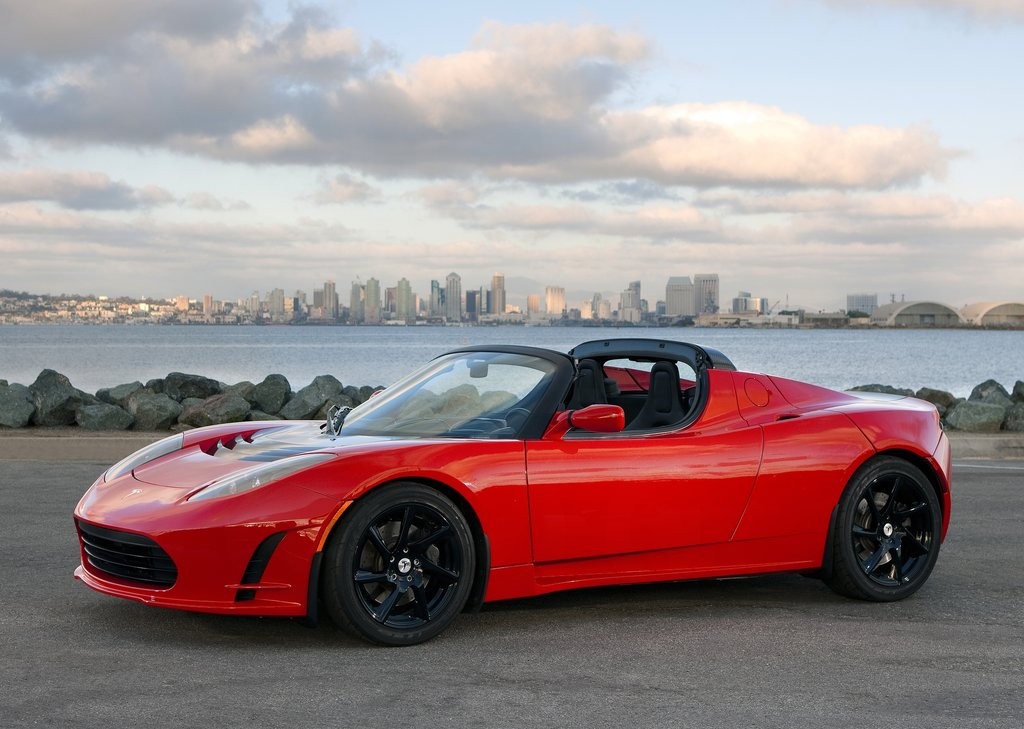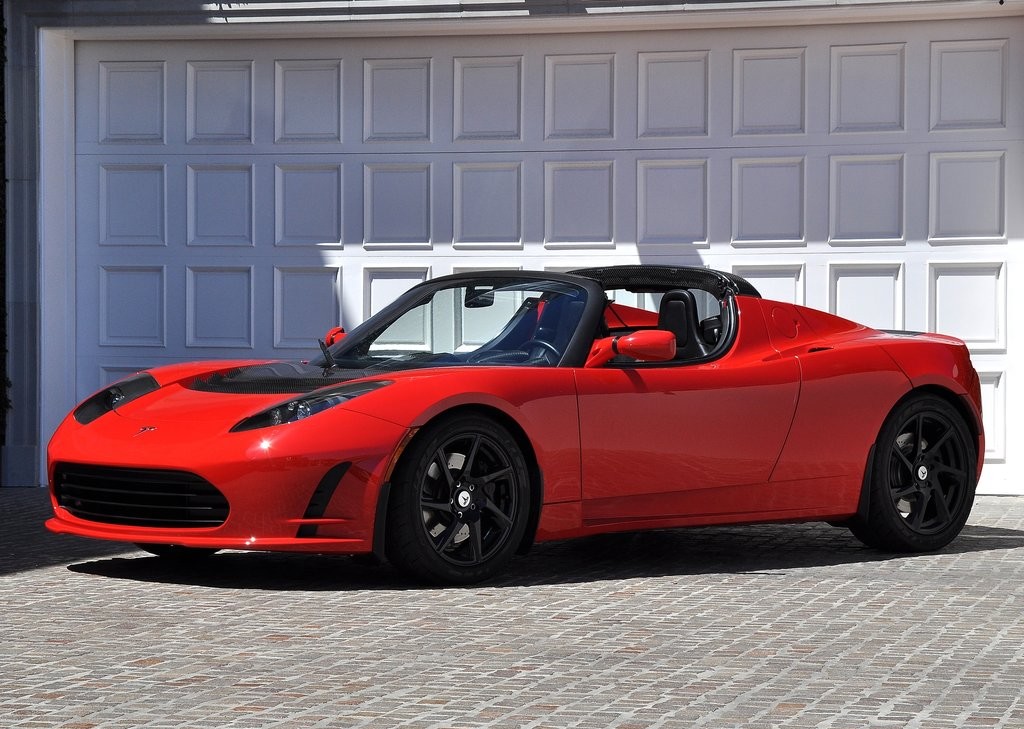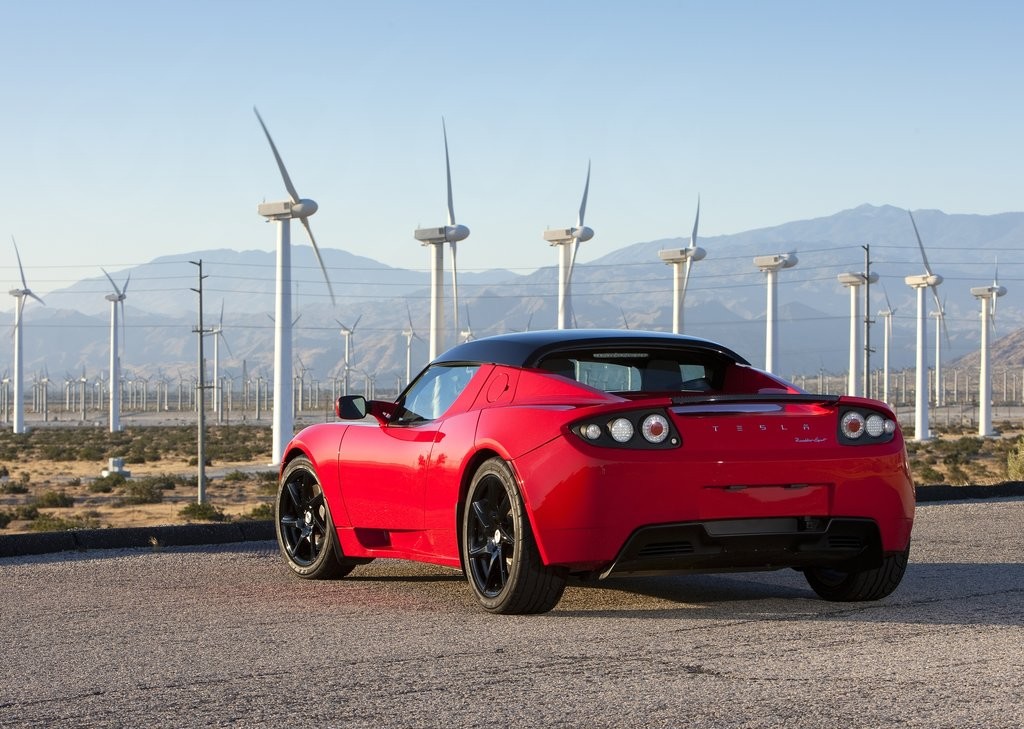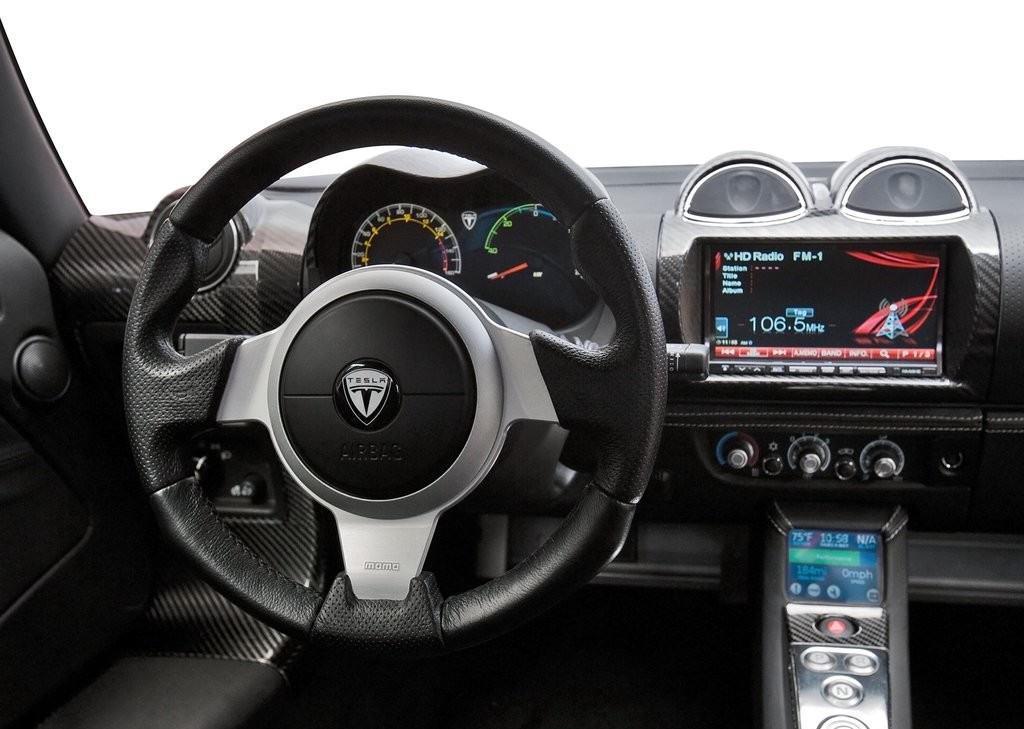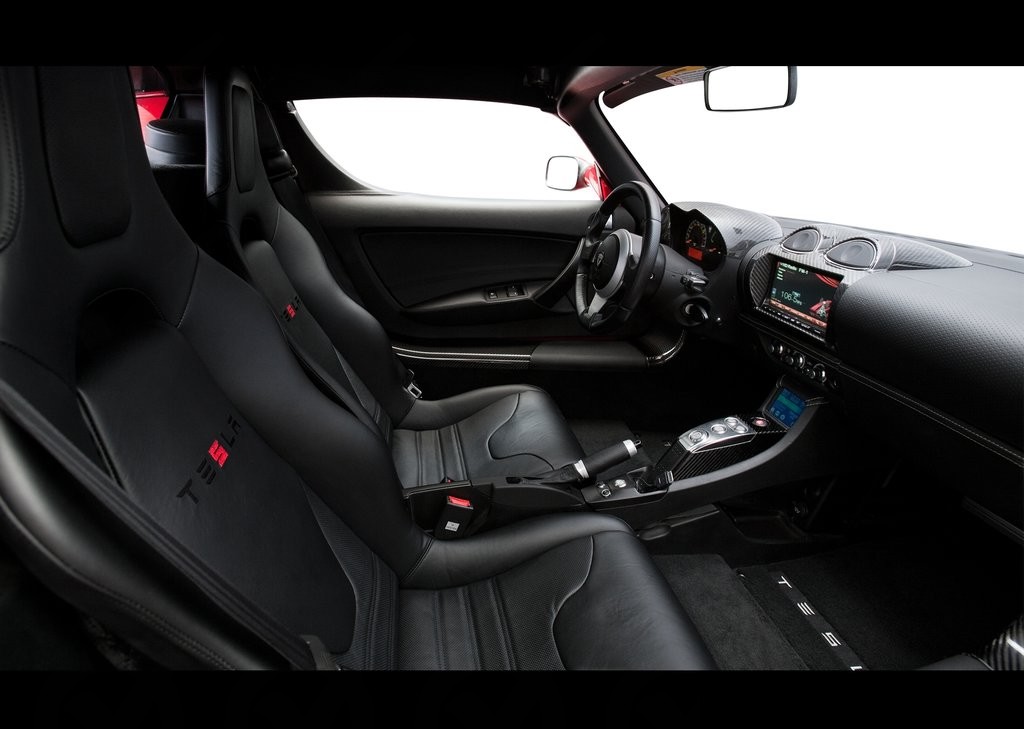
- Electric motor provides astounding performance and good range
- Impressive ride/handling balance
- Responsive brakes
- Accurate steering provides excellent feel
- Basic interior
- Cabin lacks sound insulation
- Environmental benefits limited by Australia’s energy production (primarily coal)
- Illiquid second-hand market
Overview
Released in March 2011, the Tesla Roadster was a two-door, two-seat electric vehicle. The rear-wheel drive Roadster had a monocoque chassis constructed with resin-bonded and riveted extruded aluminium. Furthermore, the chassis, windscreen, dashboard and fabric roof were shared with the Lotus Elise.
However, the Tesla Roadster was fitted with a three-phase, four-pole AC induction motor which drew power from a lithium ion battery pack; the Sport variant, however, had a higher density, hand-wound stator that provided more power. The electric motor was mated to a single-speed, fixed ratio gearbox (8.28:1). The electric motor was capable of 14,000 rpm and the Roadster 2.5 could accelerate from rest to 97 km/h (60 mph) in 3.9 seconds, while the Roadster 2.5 Sport could achieve this in 3.7 seconds.
The battery pack weighed 450 kg – contributing to the Roadster’s kerb weight of 1238 kg – and could store approximately 53 kWh of electric energy. The lithium-ion batteries provided an estimated range of 394 km (depending on driving style) and an expected life of seven years. However, the Roadster also had ‘Range’, ‘Standard’ and ‘Performance’ driving and charging modes:
- Range completely recharged the battery and reduced torque output by 50 Nm to extend the driving range;
- Standard recharged the battery to 85 per cent of its capacity for longer battery life; and,
- Performance completely recharged the battery and provided maximum torque output.
The Roadster took 15 hours to fully recharge via a standard power plug, 6.5 hours via a universal mobile connector which could draw electricity from three-phase outlets or three (3) hours if a 63 amp wall unit charger was used.
| Motor | Battery | Trans. | Variant | Peak power | Peak torque |
|---|---|---|---|---|---|
| Three-phase, four-pole AC induction motor | 53 kWh lithium-ion battery | Single-speed fixed gear | 2.5 | 215 kW at 5000-6000 rpm | 370 Nm at 0-5400 rpm |
| 2.5 Sport | 215 kW at 4400-6000 rpm | 400 Nm at 0-5100 rpm |
Safety equipment
Standard safety equipment for the Tesla Roadster included dual front airbags, ABS, traction control and front seatbelt pretensioners.
Features
Standard features for the Tesla Roadster 2.5 included silver of black forged alloy wheels (16-inch at the front and 17-inch at the rear), a four speaker sound system with auxiliary inputs (USB/iPod), air conditioning, cruise control, contoured and heated seats, Bluetooth connectivity, a leather-wrapped steering wheel, remote central locking, power windows, tyre pressure monitoring, an alarm and immobiliser. The Roadster, however, was not fitted with power steering.
The Roadster 2.5 Sport was further equipped with sports suspension and soft compound tyres.
January 2012: Roadster update
From January 2012, the Tesla Roadster was fitted with satellite navigation, premium seats amd xenon headlights. Furthermore, the air conditioning system was upgraded, improved windscreen seals reduced cabin noise, a rear snow cover was fitted and the motor and inverter were upgraded for better performance in snow and ice.
As part of the update, new recharging mobile connectors were available: the J1772 charger could be used at certain charge stations and the Tesla IEC Type 2 (Mennekes) connector enabled charging from Type 2 stations and outlets.
Related links
